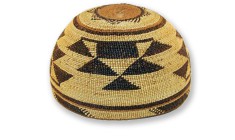WikiLeaks, Text, and Archaeology: The Case of the Schøyen Incantation Bowls
Brodie, N. and Kersel, M.M. (2014) ‘WikiLeaks, Text, and Archaeology: The Case of the Schøyen Incantation Bowls’, in Rutz, M.T. and Kersel, M.M. (eds.) Archaeology of Text: Archaeology, Technology, and Ethics. Philadelphia: Oxbow, pp. 198–213.
Do ancient texts speak for themselves? Does the historical interpretation of an inscribed artifact suffer without knowledge of its archaeological context? How can the Assyriologist, papyrologist, or epigrapher ever be truly confident that the artifact under study is genuine when its complete history is unknown? These questions address the often debilitating effects of missing provenance and provenience on archaeological and textual scholarship.
Provenance is usually defined as the ownership history of an artifact, including its known archaeological findspot, while provenience is its findspot only. Thus provenance encompasses provenience, although the terms are often used synonymously and interchangeably. Archaeologists and epigraphers engaged in the debate over the publication of unprovenanced artifacts are usually at odds on the topics of missing provenience and the loss of archaeological context. They agree that textual material can carry historical information that is to some extent independent of archaeological context, though they often disagree as to what extent. Archaeologists who are interested in the antiquities trade, however, are also concerned about issues relating to the broader provenance, or ownership history, of objects once they are out of the ground. Using Aramaic incantation bowls as an example, in this chapter we explore the multivalence of inscribed artifacts and show how scholarly disagreement over the importance of provenance, including provenience, has degenerated into an ongoing, often vitriolic debate, with occasional legal consequences. We will use the release on WikiLeaks of a previously sequestered report into the provenance of a collection of incantation bowls belonging to the Norwegian collector Martin Schøyen as a point of entry into a broad-ranging discussion that touches upon the nature of historical knowledge, intellectual access, and issues of provenance and evidence.
